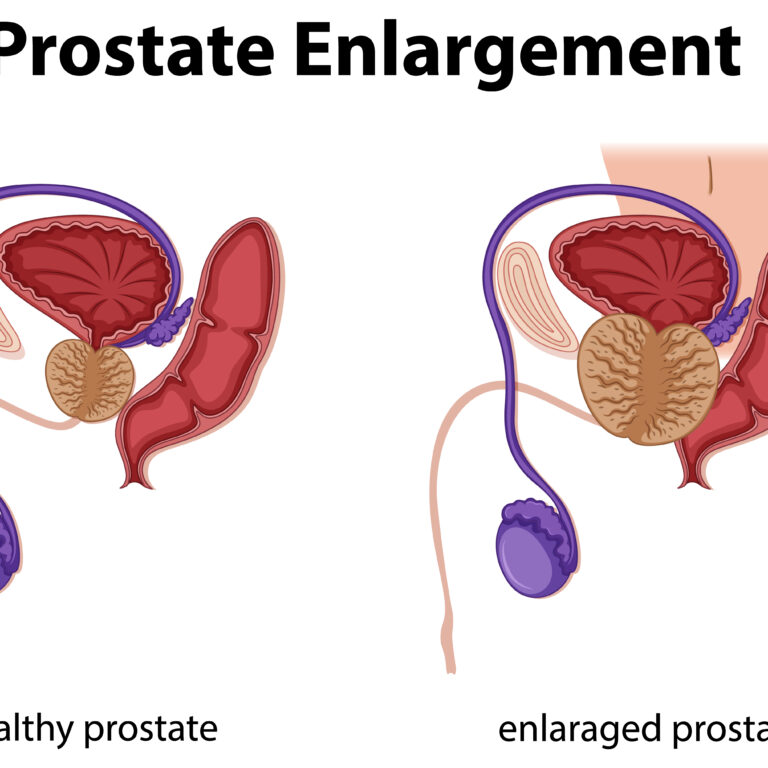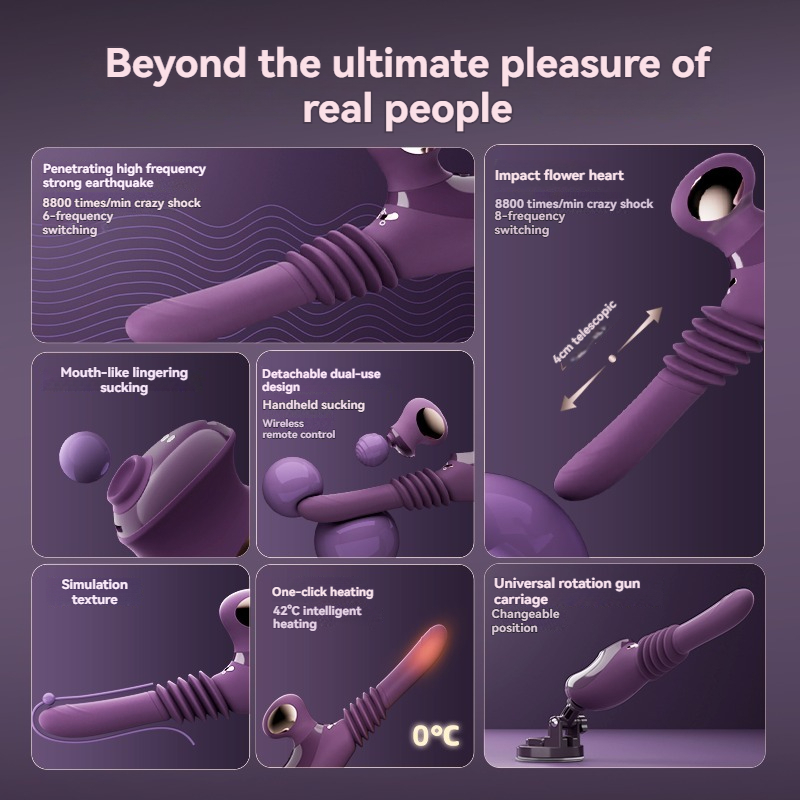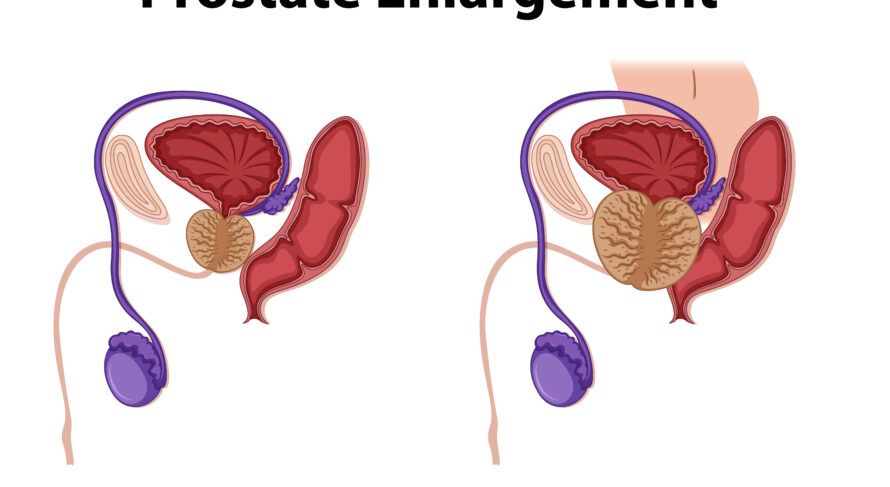What Does Sex Feel Like? An In-Depth Psychological Exploration Introduction

Introduction: The Complexity of Sexual Experience
Sex is a deeply personal and multifaceted experience that defies simple explanation. It encompasses a rich tapestry of physical sensations, emotional connections, psychological dimensions, and cultural influences, making it as universal as it is uniquely individual. From the way our bodies respond to touch to the intricate emotions tied to intimacy, sex is shaped by an interplay of biology, mindsets, relationships, and societal norms.
At its core, sex is far more than physical gratification. It is a dynamic exchange that engages the entire self—body, mind, and spirit. For some, it represents a profound emotional connection with a partner, while for others, it may serve as a form of self-expression, a stress-relief mechanism, or even an exploration of identity. Each experience is colored by personal history, cultural background, and the nuances of individual relationships.
Sex as a Physical Experience
The physical sensations of sex are undeniably central to the experience, driven by a complex network of physiological processes. These include:
- The activation of sensory nerves that heighten pleasure.
- The release of hormones such as dopamine and oxytocin, which contribute to feelings of euphoria and bonding.
- The rhythmic contractions of muscles during orgasm, providing an intensely physical climax.
Yet, these physical responses are not uniform. Differences in anatomy, health, and arousal states mean that what feels pleasurable for one person may not be the same for another. This variability highlights the importance of communication and exploration in uncovering what works best for each individual.
Sex as an Emotional Connection
While the physical aspects of sex are often emphasized, its emotional dimensions can be even more profound. Sexual intimacy often deepens the bond between partners, fostering trust, vulnerability, and a sense of connection. For many, the emotional satisfaction derived from sex is as important—if not more so—than the physical pleasure.
Emotional intimacy during sex is influenced by:
- The level of trust and communication between partners.
- Shared vulnerability, which allows individuals to express their authentic selves without fear of judgment.
- The context of the relationship, whether it’s a long-term partnership or a fleeting connection.
This emotional layer makes sex a uniquely human experience, differentiating it from purely physical acts of reproduction seen in other species.
The Psychological Dimension of Sex
Sex engages the mind as much as the body. Psychological factors—such as desire, self-esteem, and past experiences—play a critical role in shaping the sexual experience. These can enhance or inhibit pleasure and satisfaction, depending on how they are managed.
Key psychological aspects include:
- Desire and arousal: The mental anticipation of intimacy often intensifies the physical response.
- Self-image: Confidence in one’s body and self-worth can significantly impact the quality of sexual experiences.
- Mental health: Anxiety, depression, or trauma can influence sexual feelings, sometimes creating barriers to intimacy.
Understanding the psychological dimension of sex empowers individuals to address concerns, seek support, and foster healthier relationships with themselves and their partners.
Cultural and Societal Influences
Sex is not experienced in isolation from the world around us. Cultural and societal norms heavily influence how people perceive and approach sex. These external factors can shape everything from personal preferences to the way individuals communicate their needs and desires.
- Cultural norms: In some societies, sex is viewed as a taboo topic, while in others, it is celebrated openly. These cultural attitudes impact how individuals approach intimacy and express themselves sexually.
- Media and stereotypes: Unrealistic portrayals of sex in movies, pornography, and media often create distorted expectations, leading to feelings of inadequacy or confusion.
- Gender roles and expectations: Traditional notions about masculinity and femininity can impose pressures that hinder authentic sexual expression.
By recognizing these influences, individuals can challenge harmful norms, embrace diversity, and redefine sexuality on their own terms.
Why This Exploration Matters
Understanding the multifaceted nature of sex is vital for cultivating fulfilling and meaningful relationships—both with others and with oneself. This exploration aims to provide a detailed and inclusive perspective, drawing insights from:
- Psychology: To understand how thoughts, emotions, and mental health shape sexual experiences.
- Physiology: To uncover the biological processes that drive physical sensations and responses.
- Human Behavior: To examine how interpersonal dynamics and societal influences impact intimacy.
By dissecting these complexities, individuals can:
- Deepen their emotional and physical connections with partners.
- Overcome barriers such as performance anxiety or cultural stigmas.
- Celebrate their unique sexual identities and preferences without shame or judgment.
Sex is not a one-size-fits-all experience; it is as diverse and evolving as the people who engage in it. This exploration invites readers to move beyond surface-level understandings, delving into the nuances that make sex a profoundly human experience. Whether you’re seeking to better understand your own feelings or improve intimacy with a partner, this journey promises to illuminate the intricate beauty of sexuality.

I. The Physiology of Sexual Response
The human body undergoes a series of predictable yet unique changes during sexual activity. These physiological responses are mapped out in the Sexual Response Cycle, developed by Masters and Johnson (1966).
A. The Sexual Response Cycle
The Sexual Response Cycle is a widely recognized framework that outlines the physical, emotional, and psychological changes that occur during sexual activity. It consists of four distinct phases: excitement, plateau, orgasm, and resolution. Each phase is unique, marked by specific physiological and psychological responses, and varies greatly among individuals.
1. Excitement Phase
The excitement phase is the initial stage of the sexual response, where arousal begins and the body starts to prepare for potential sexual activity. This phase can be brief or prolonged, depending on factors such as emotional connection, physical stimulation, and external circumstances.
- Physical Changes:
- Blood flow increases to the genital area, causing physical changes such as erections in men and vaginal lubrication in women.
- Swelling of the genitals occurs, with the clitoris, nipples, and labia in women becoming more sensitive.
- Heart rate and blood pressure rise, and some individuals experience a flushing of the skin, often called the “sex flush.”
- Sensory Heightening:
- Senses like touch, sight, sound, and even smell become more pronounced, creating a heightened sensitivity to stimuli.
- Erotic stimuli—whether visual, auditory, or physical—play a significant role in amplifying arousal during this phase.
- Individual Variability:
- The speed and intensity of the excitement phase vary greatly. Some individuals experience rapid arousal, while others may take longer, influenced by their emotional state, stress levels, and quality of foreplay.
- Factors such as hormonal fluctuations, mental focus, and trust with the partner can also impact the duration and intensity of this phase.
2. Plateau Phase
The plateau phase represents a heightened state of arousal where physical and emotional sensations build toward orgasm. This phase is characterized by a steady intensification of the sexual experience.
- Intensification:
- Muscle tension reaches its peak, and physical changes from the excitement phase become more pronounced.
- In men, the testicles may elevate, and pre-ejaculatory fluid may appear. In women, the vagina’s outer third tightens, forming what is known as the “orgasmic platform.”
- Breathing becomes deeper and faster, with some individuals experiencing irregularities in rhythm as anticipation builds.
- Mental Engagement:
- Psychological focus sharpens, with thoughts centering on the experience itself.
- While mental engagement enhances pleasure for many, others may become overly self-conscious or distracted, which can disrupt progression to orgasm.
- Emotional Connection:
- For many individuals, the plateau phase deepens feelings of intimacy and connection, especially in partnered scenarios.
- Communication—verbal or non-verbal—often enhances the experience during this stage.
3. Orgasm
The orgasm phase is the climax of the sexual response cycle, characterized by an intense release of physical and emotional tension. This phase is often considered the pinnacle of sexual pleasure.
- Muscle Contractions:
- Rhythmic contractions occur in the pelvic muscles, genitals, and reproductive organs. In men, these contractions typically result in ejaculation, while in women, contractions are often felt in the vaginal walls and uterus.
- Whole-body responses, such as spasms or tremors, may accompany the orgasm.
- Euphoria:
- A surge of dopamine and oxytocin floods the brain, creating feelings of intense pleasure, connection, and satisfaction.
- Some individuals describe orgasms as sharp, explosive bursts of pleasure, while others experience them as prolonged, rolling waves.
- Variability in Experience:
- Orgasms differ in intensity, duration, and quality across individuals. Factors such as stress, relaxation, comfort, and technique can all influence the experience.
- Women are capable of experiencing multiple orgasms in succession without a refractory period, while men typically require time to recover before another orgasm is possible.
4. Resolution Phase
The resolution phase marks the body’s gradual return to its pre-arousal state following climax. This phase is often accompanied by feelings of satisfaction and emotional closeness, especially in partnered experiences.
- Relaxation:
- The body begins to unwind as heart rate, blood pressure, and muscle tension return to baseline levels.
- Many individuals experience a profound sense of calm and contentment, often attributed to the release of oxytocin and endorphins.
- Refractory Period:
- In men, the refractory period can vary widely, lasting anywhere from a few minutes to several hours or more. During this time, it is physiologically impossible to achieve another erection or orgasm.
- Women, however, may remain capable of additional orgasms almost immediately, depending on arousal and stimulation.
- Emotional Aftermath:
- For many, the resolution phase fosters emotional bonding, particularly in a trusting, intimate relationship. Post-coital cud
B. Neurological and Hormonal Influences
1. Neurotransmitters
- Dopamine: Often called the “pleasure molecule,” it reinforces feelings of reward and satisfaction.
- Serotonin: Impacts arousal levels and mood, balancing the experience.
2. Hormones
- Oxytocin: Known as the “cuddle hormone,” it promotes bonding and post-orgasmic bliss.
- Vasopressin: Contributes to feelings of loyalty and long-term commitment.
- Testosterone and Estrogen: Fuel libido and physical arousal, though levels fluctuate naturally.
II. Psychological Aspects of Sexual Experience
Sex is as much a mental and emotional act as it is physical. Our minds shape and are shaped by sexual experiences.
A. Emotional Connection and Intimacy
1. Attachment Theory
- Secure attachments in relationships foster greater sexual satisfaction by creating a safe space for vulnerability.
- Conversely, insecure attachments may hinder intimacy or create anxiety around sexual performance.
2. Trust and Safety
- Feeling emotionally safe allows individuals to explore desires without fear of judgment or rejection.
- Open conversations about boundaries and fantasies deepen connections.
B. Cognitive Factors
1. Expectations and Beliefs
- Cultural and personal beliefs heavily influence what individuals expect from sex.
- Unrealistic expectations—often fueled by media portrayals—can lead to dissatisfaction or anxiety.
2. Past Experiences
- Positive experiences create a foundation of confidence and enjoyment.
- Negative experiences, including trauma, can require healing and support to rebuild a healthy relationship with sex.
C. Cultural and Social Influences
1. Societal Norms
- Attitudes toward sex differ across cultures, shaping everything from openness to experimentation to the stigma around discussing it.
2. Media Portrayal
- Hollywood and pornography often depict sex in exaggerated or unrealistic ways, creating misconceptions about performance, body image, and pleasure.
III. Individual Differences in Sexual Experience
Every individual brings unique preferences, identities, and desires to their sexual experiences.
A. Gender Differences
1. Male vs. Female Sexual Response
- While men typically experience faster arousal, women often find satisfaction in prolonged foreplay and emotional connection.
- Societal conditioning may pressure men to prioritize performance, while women may feel pressure to meet aesthetic ideals.
2. Gender Identity and Expression
- Inclusive understanding of gender enriches intimacy, as individuals feel more authentic and comfortable expressing themselves.
B. Sexual Orientation and Identity
1. Diverse Experiences
- LGBTQ+ individuals navigate unique challenges, from societal stigma to finding affirmation within relationships.
2. Inclusivity in Relationships
- Emphasizing open dialogue ensures that partners understand each other’s needs and boundaries.
C. Personal Preferences and Fantasies
1. Role of Desires
- Fantasies are a natural and healthy part of sexuality, often enhancing arousal and satisfaction when shared consensually.
2. Communication
- Regular conversations about preferences, likes, and dislikes foster mutual understanding and trust.
IV. Psychological Benefits of Sexual Activity
Sex is not just a means of physical connection—it has profound psychological advantages that ripple through mental health, relationships, and self-perception. Understanding these benefits deepens appreciation for the role sex plays in overall well-being.
A. Stress Reduction and Mental Health
1. Release of Endorphins
- During sexual activity, the body releases endorphins, often called “feel-good” hormones. These natural painkillers improve mood, alleviate stress, and even enhance focus.
- Real-Life Example: Consider a couple who experiences high stress at work. Engaging in regular, satisfying sexual activity can serve as a bonding ritual that helps both partners decompress, improving their mood and productivity.
2. Lower Cortisol Levels
- Studies indicate that sexual intimacy reduces cortisol, the stress hormone. Lower cortisol levels help regulate blood pressure, improve sleep, and create a sense of calm.
- Practical Tip: Incorporating sensual massages or non-penetrative touch can initiate stress reduction before sex, enhancing the experience.
3. Alleviating Anxiety and Depression
- For many, the emotional connection built during intimacy offers a reprieve from feelings of loneliness or inadequacy.
- Caveat: While sex can temporarily alleviate symptoms of anxiety or depression, it is not a substitute for professional mental health support.
B. Enhanced Relationship Satisfaction
1. Emotional Bonding Through Oxytocin
- Known as the “love hormone,” oxytocin is released during orgasms and skin-to-skin contact, fostering closeness and trust.
- Fun Fact: Studies show couples who cuddle post-sex report higher relationship satisfaction.
2. Strengthened Communication
- Sharing intimate moments often opens pathways for honest dialogue. Couples frequently report that sexual compatibility enhances their ability to navigate conflicts.
3. Rituals of Connection
- Establishing sexual rituals, like date nights or uninterrupted mornings, reinforces the relationship as a priority amid busy schedules.
C. Improved Self-Esteem and Body Image
1. Positive Reinforcement from a Partner
- Feeling desired and appreciated by a partner can affirm one’s sense of self-worth. A compliment during intimate moments can significantly bolster confidence.
2. Enhanced Comfort with One’s Body
- Engaging in sexual activity helps individuals focus on physical sensations rather than perceived flaws. Over time, this acceptance can extend to other areas of life.
3. Celebrating Individuality
- Diverse bodies experience pleasure differently. Emphasizing uniqueness over comparison fosters a healthier self-image.
A couple shares playful and intimate moments on their bed at home.
V. Common Misconceptions About Sexual Feelings
Sex is a deeply personal and varied experience, yet it is often romanticized, misunderstood, or laden with societal expectations. These misconceptions can create unnecessary pressure, hinder enjoyment, and perpetuate unrealistic ideals. Dispelling these myths encourages healthier perspectives, more fulfilling experiences, and greater self-acceptance.
A. Myths About Orgasm and Pleasure
1. Orgasm Is Not the Sole Measure of Success
- The Myth: “Sex without orgasm is unsuccessful.”
- This widespread misconception reduces the complexity of sexual experiences to a single physical outcome, overlooking the emotional, mental, and sensory dimensions of intimacy.
- The Reality:
- Emotional intimacy, sensual touch, and mutual satisfaction often matter more than achieving climax.
- Partners can experience deep fulfillment through shared vulnerability, communication, and exploration, even if an orgasm isn’t achieved.
- Example:
- A couple engaging in prolonged foreplay may feel closer and more connected, prioritizing the journey over the destination. This emotional bond can sometimes provide a deeper sense of satisfaction than climax itself.
2. Pleasure Is Multifaceted
- While orgasm is often emphasized, pleasure is not confined to physical sensations.
- Mental stimulation, emotional safety, and shared humor can be equally significant.
- Activities like exploring erogenous zones, engaging in slow, intentional foreplay, or simply enjoying laughter and playfulness in bed contribute to a rich and satisfying experience.
- Holistic Perspective:
- True pleasure involves a blend of emotional, physical, and psychological factors. This multifaceted approach fosters a deeper connection with oneself and one’s partner.
B. Addressing Performance Anxiety
1. Shifting Focus from Performance to Connection
- The Pressure: Many individuals worry about “getting it right,” whether it’s about maintaining an erection, lasting long enough, or meeting a partner’s expectations.
- The Shift:
- By focusing on the emotional bond rather than technical precision, the anxiety surrounding performance can be alleviated.
- Viewing intimacy as an opportunity to connect rather than perform creates a more relaxed and enjoyable experience for both partners.
2. Practical Strategies to Combat Pressure
- Breathing Exercises:
- Practice deep, mindful breathing to stay present in the moment, reducing feelings of stress or overthinking.
- Open Communication:
- Discuss insecurities with a partner to demystify fears and build mutual understanding.
- Honest conversations about vulnerabilities often enhance intimacy.
- Exploration Over Expectation:
- Temporary challenges, such as erectile difficulties or inability to climax, can become opportunities to explore non-penetrative intimacy.
- Activities like massage, kissing, or mutual touch allow couples to bond without the pressure of achieving specific goals.
C. Deconstructing Stereotypes
1. Overcoming Harmful Norms
- Traditional Expectations:
- Men are often pressured to always “initiate” or “perform,” while women may feel confined to passive roles. These roles can create stress, frustration, and a lack of genuine connection.
- Breaking Free:
- Redefining roles in the bedroom allows partners to express themselves authentically, exploring desires and dynamics that feel natural rather than imposed by societal norms.
- Example:
- A relationship where partners take turns initiating intimacy or experimenting with role reversals often leads to greater equality and shared enjoyment.
2. Celebrating Diversity
- Expanding Definitions:
- Embracing varied expressions of gender, sexuality, and preferences helps normalize diverse experiences of intimacy.
- This creates space for authentic connections, free from the constraints of rigid stereotypes.
- Inclusivity and Acceptance:
- Recognizing that everyone’s preferences, boundaries, and needs are different fosters mutual respect and understanding.
- Celebrating diversity in intimacy leads to more inclusive and fulfilling relationships, where each partner feels seen, heard, and valued.
VI. The Role of Communication in Sexual Satisfaction
Effective communication forms the bedrock of a fulfilling sexual relationship. Without it, misunderstandings and unmet needs may arise.
A. Importance of Open Dialogue
1. Discussing Desires Without Judgment
- Partners should feel safe to express preferences, fantasies, or discomfort. Open dialogue prevents resentment and strengthens intimacy.
2. Practicing Active Listening
- Active listening involves validating a partner’s feelings and engaging with their perspective. For example, acknowledging a partner’s vulnerability fosters trust.
B. Consent and Mutual Respect
1. Defining Consent as Ongoing
- Consent is not a one-time agreement; it’s a continuous dialogue. Checking in with a partner maintains mutual comfort.
2. Boundaries Are Empowering
- Respecting boundaries builds a foundation of trust. Partners are more likely to experiment when they feel their limits are acknowledged.
C. Seeking Professional Help
1. When to Seek Therapy
- Challenges such as mismatched libidos, lingering trauma, or physical discomfort are valid reasons to consult a sex therapist.
2. Benefits of Expert Guidance
- A professional can provide tailored strategies, tools for communication, or medical advice to enhance sexual health.
A couple shares a playful and tender moment in bed, basking in warm sunlight and their affectionate connection.
Conclusion
Sex is a tapestry of physical sensations, emotional intimacy, and mental engagement. It evolves with experience, shaped by cultural influences, personal preferences, and relational dynamics. By embracing open communication, exploring individual desires, and prioritizing mutual respect, couples can deepen their connection and unlock the multifaceted joys of intimacy.
Understanding what sex feels like isn’t about finding a universal answer—it’s about exploring its infinite diversity and appreciating its role in our shared humanity.
References
- Masters, W. H., & Johnson, V. E. (1966). Human Sexual Response. Little, Brown.
- Seminal work outlining the sexual response cycle and physiological changes during sexual activity.
- Bowlby, J. (1988). A Secure Base: Parent-Child Attachment and Healthy Human Development. Basic Books.
- Explores attachment theory and its impact on emotional connections, including intimacy in relationships.
- Fisher, H. E. (1998). Lust, attraction, and attachment in mammalian reproduction. Human Nature, 9(1), 23-52.
- Examines the biological underpinnings of romantic and sexual relationships.
- Kaplan, H. S. (1979). Disorders of Sexual Desire and Other New Concepts in Sex Therapy. Brunner/Mazel.
- A detailed look at psychological factors influencing sexual satisfaction and challenges.
- Levine, S. B. (2002). Reexploring the concept of sexual desire. Journal of Sex & Marital Therapy, 28(1), 39-51.
- Discusses the complex interplay of emotional and physical elements in sexual desire.
- Pfaus, J. G. (2009). Pathways of sexual desire. The Journal of Sexual Medicine, 6(6), 1506–1533.
- A scientific exploration of the neurological and hormonal pathways of arousal and desire.
- Basson, R. (2001). Using a different model for female sexual response to address women’s problematic low sexual desire. Journal of Sex & Marital Therapy, 27(5), 395-403.
- Proposes a nuanced understanding of female sexual arousal and satisfaction.
- Laumann, E. O., Paik, A., & Rosen, R. C. (1999). Sexual dysfunction in the United States: Prevalence and predictors. JAMA, 281(6), 537–544.
- Comprehensive data on sexual health and common dysfunctions in the U.S. population.
- Perel, E. (2006). Mating in Captivity: Unlocking Erotic Intelligence. HarperCollins.
- A thought-provoking book on sustaining desire in long-term relationships and navigating intimacy challenges.
- Prause, N., & Pfaus, J. G. (2015). Viewing sexual stimuli associated with greater sexual responsiveness, not erectile dysfunction. Frontiers in Psychology, 6, 1184.
- Investigates the relationship between exposure to sexual stimuli and arousal.
- Brotto, L., & Luria, M. (2014). Sexual mindfulness: A novel approach to improving sexual well-being. Mindfulness, 5(5), 526-533.
- Explores mindfulness practices to enhance sexual satisfaction and intimacy.
- WHO (World Health Organization). (2010). Measuring sexual health: Conceptual and practical considerations and related indicators.
- A global perspective on sexual health and its significance in well-being.
- American Psychological Association (APA). (2019). Sexuality and psychology. Retrieved from https://www.apa.org/topics/sexuality/
- Kinsey, A. C., Pomeroy, W. B., & Martin, C. E. (1948). Sexual Behavior in the Human Male. Saunders.
- A foundational study analyzing sexual behavior patterns and responses.
- Simon, W., & Gagnon, J. H. (1986). Sexual scripts: Permanence and change. Archives of Sexual Behavior, 15(2), 97-120.
- Introduces the concept of “sexual scripts” to understand cultural and individual narratives in sexual behavior.































































































